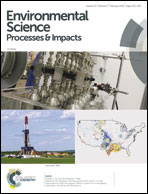Detecting environmental change: how many samples are required?
Abstract
One of the most important functions of environmental monitoring is the detection of change. This can be the delineation of deteriorating circumstances or the identification of the success of remedial measures. The design of effective monitoring of change (and hence the optimisation of resources devoted to monitoring) relies on appropriate replication – knowing how many samples are required. Lack of information on the variance of the measured parameter is often a barrier to determining the optimum sampling strategy. An important new information resource on within-site variance of the concentrations of over 60 trace substances in wastewater treatment works effluents has been provided by the UK water industry research programme. This paper makes use of this resource in order to explore the potential to design monitoring programmes that will be capable of demonstrating the success of planned remedial measures that will be implemented in the coming years. Two approaches to experimental design (simple before-and-after sampling and detection of trends via correlation) are examined. It is concluded that for programmes involving numbers of samples of less than 30 the detection of a change in concentration of less than 50% might be very challenging for many of the trace substance of greatest interest. Knowledge of the difficulty of the task in hand should make it possible to design programmes that optimise the use of resources and the approaches taken, such that effects of interest are detected as soon and as economically as possible.



 Please wait while we load your content...
Please wait while we load your content...